Green gardening: Plant your own oasis with a native garden
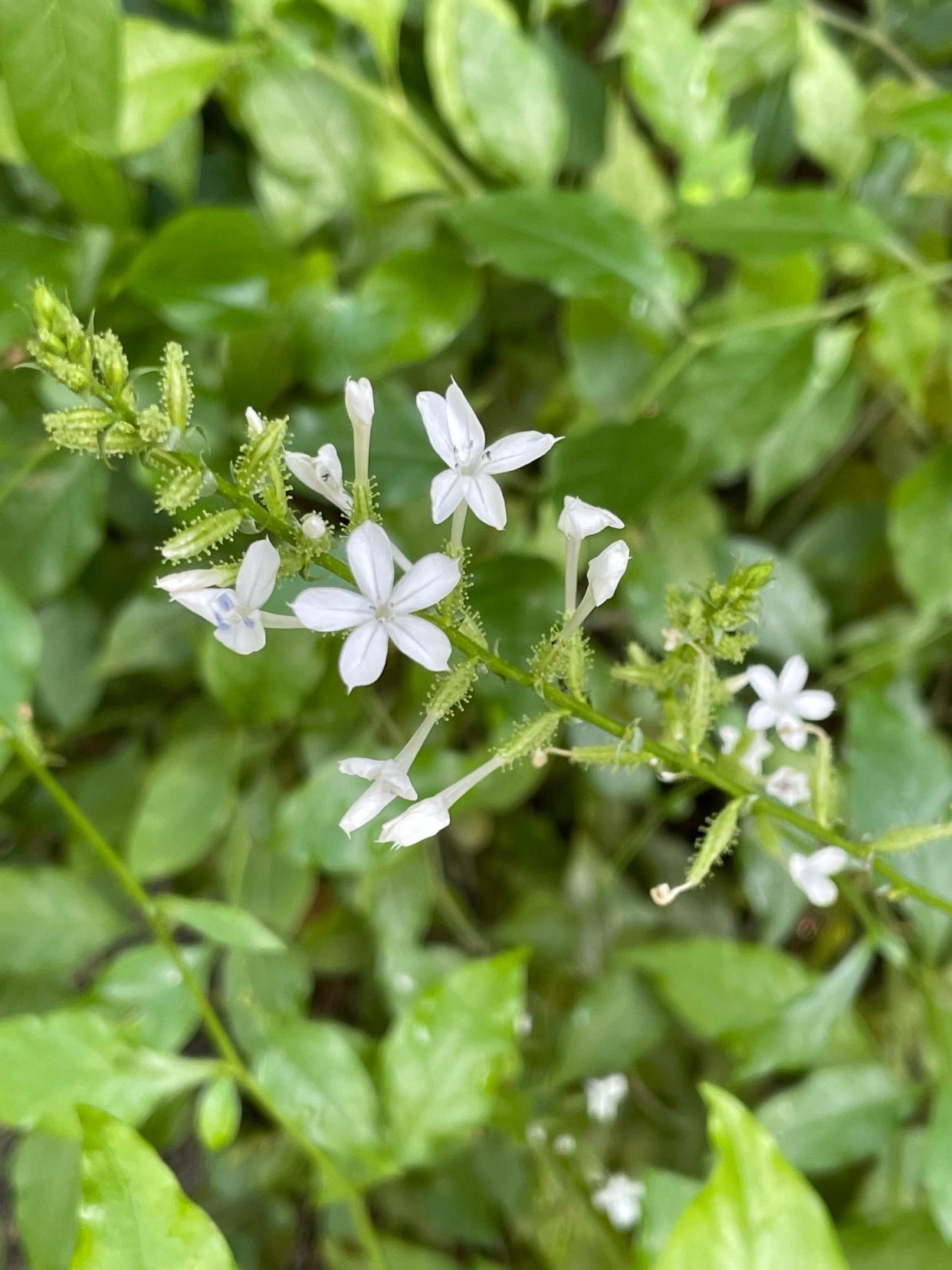
When we moved into our home in the fall of 2020, there was a 50-foot-by-60-foot lot next to our loggia that had been the staging area for all the construction work at Via Flagler.
Formerly home to massive cranes, trucks, Dumpsters and 16 Port-O-Potties, this scorched earth plot that didn’t look too hopeful for a garden site.
But we started planting it last November and a year later, it has grown into a wonderful oasis full of pollinators, birds, butterflies and, recently, a few ruby-throated hummingbirds.
It is now a real garden, with more than 60 species of native and Florida-friendly plant species adding color, texture, fragrance and interest year-round. Since many of you have asked about planting natives, here’s a brief rundown of what I used, and how the plants are doing.
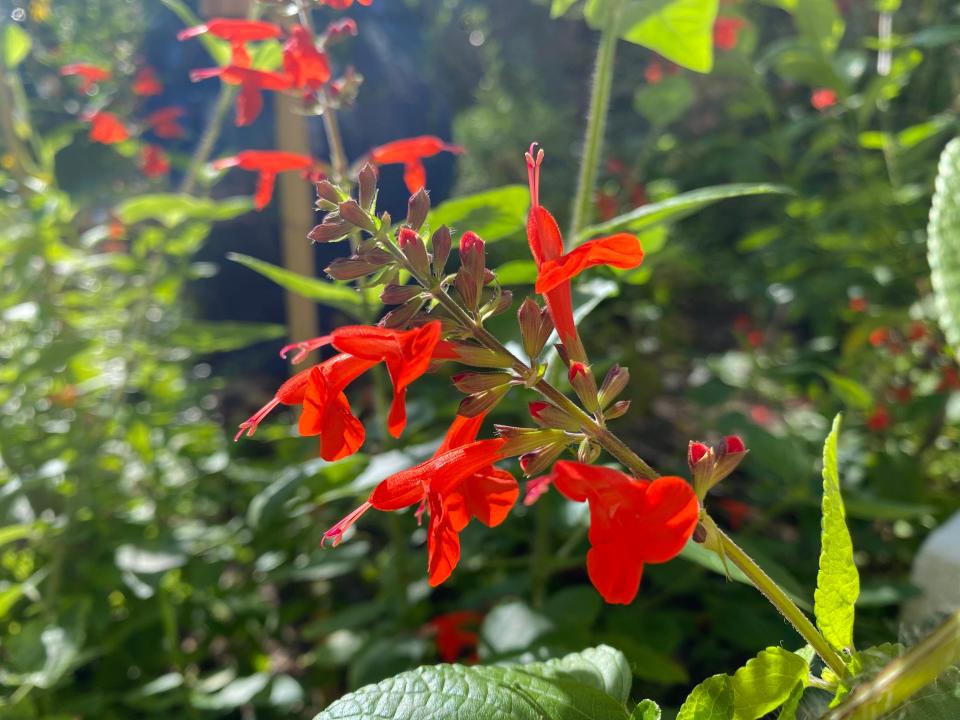
Because the lot backs onto an alley, it was imperative that we had a tall hedge to block the view. Thick fishtail palms formed the initial backdrop to the east and south. These were augmented by sabal palms (our state tree), wild coffee, cocoplum and saw palmetto. On the north and west sides, along Sunset Avenue and the entry walkway, there is a hedge of Simpson's stopper, with thatch palms, wild coffee and more saw palmetto.
In front, along the sidewalk, is a thick carpet of Southern river sage (Salvia misella), which excels in the shade and is much prettier than the common jasmine minima. The salvia’s tiny blue flower sparkles among the deep green foliage and it’s tough enough to withstand dogs and children. Blue plumbago spills gracefully over the steps, mixing nicely with the salvia. Saw palmetto adds a lovely gray-blue contrast.
The entry walkway is lined with marlberry, wild coffee, pineland croton, coonties, white pearlberry, Simpson's stopper, myrsine and native ferns, interspersed with Alexander palms due to the limited space. This is not a native palm, but everything else on the walkway is, and the myrsine is a particularly good choice for the narrow shady spot beside the gate. I love this entry because it feels like you’re walking through a tropical forest.
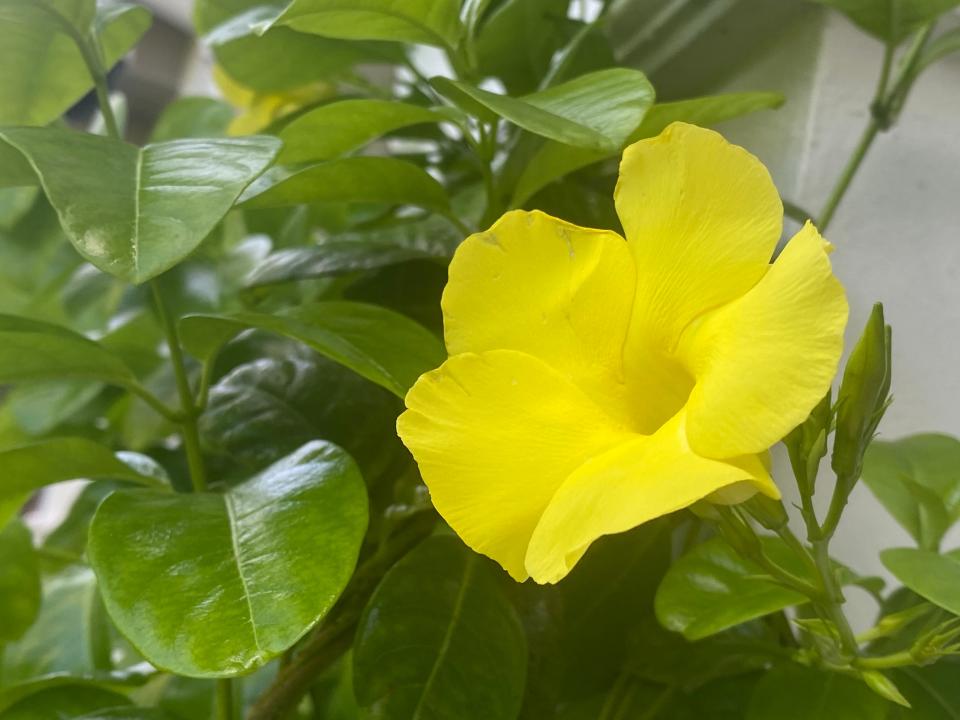
Once inside the garden, there’s an abundance of color from rosy coral honeysuckle and yellow allamanda espaliered up the arches opening onto the loggia. Bluepea vine and native corkystem passionflower adorn the trunks of sabal palms; orchids we’ve added after they finished blooming have now rooted to the palms, gumbo limbo, live oaks and ligustrum trees that form an inner perimeter.
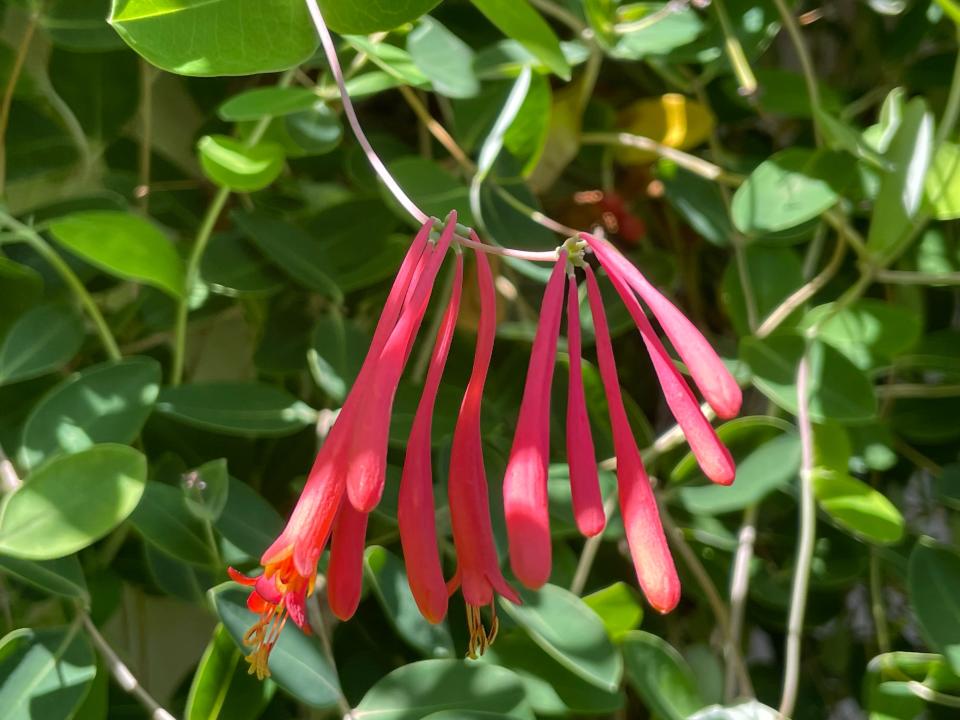
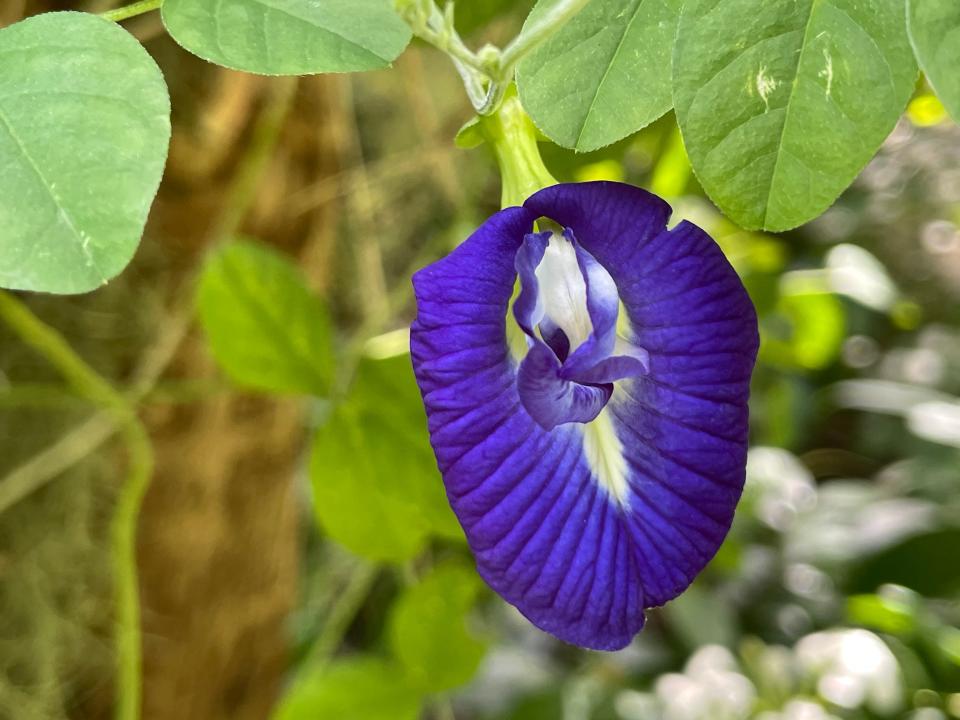
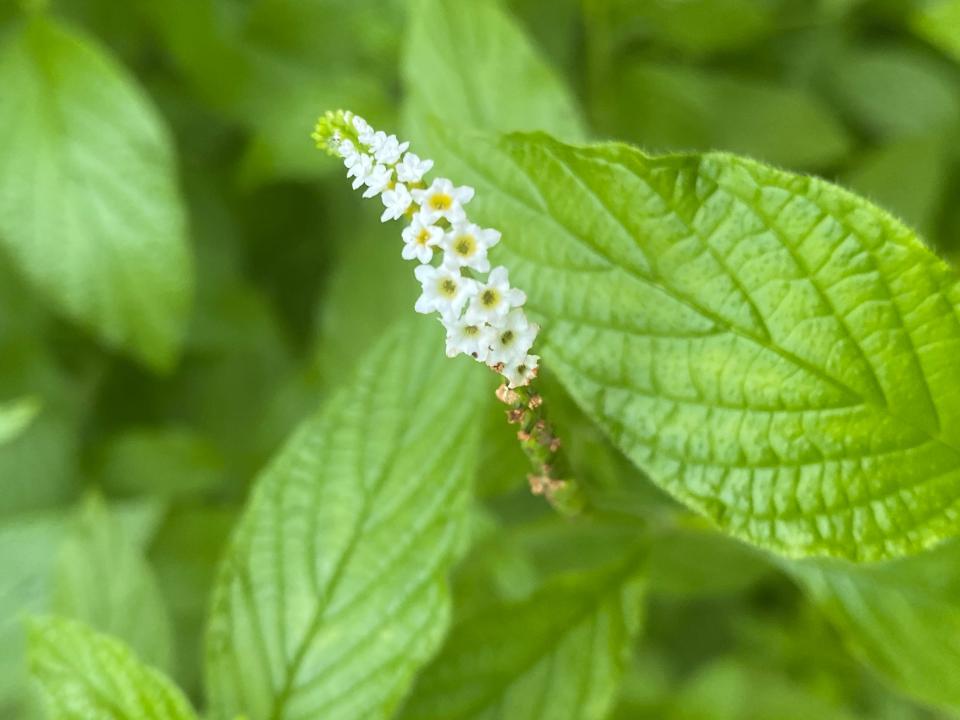
To provide a bit of a jungle feel as you look out from the loggia, a profusion of heights and colors border the coquina stone: native white plumbago, red and pink Salvia coccinea, blue ageratum, yellow coreopsis and starry rosinweed, white scorpion-tail and pink monarda.
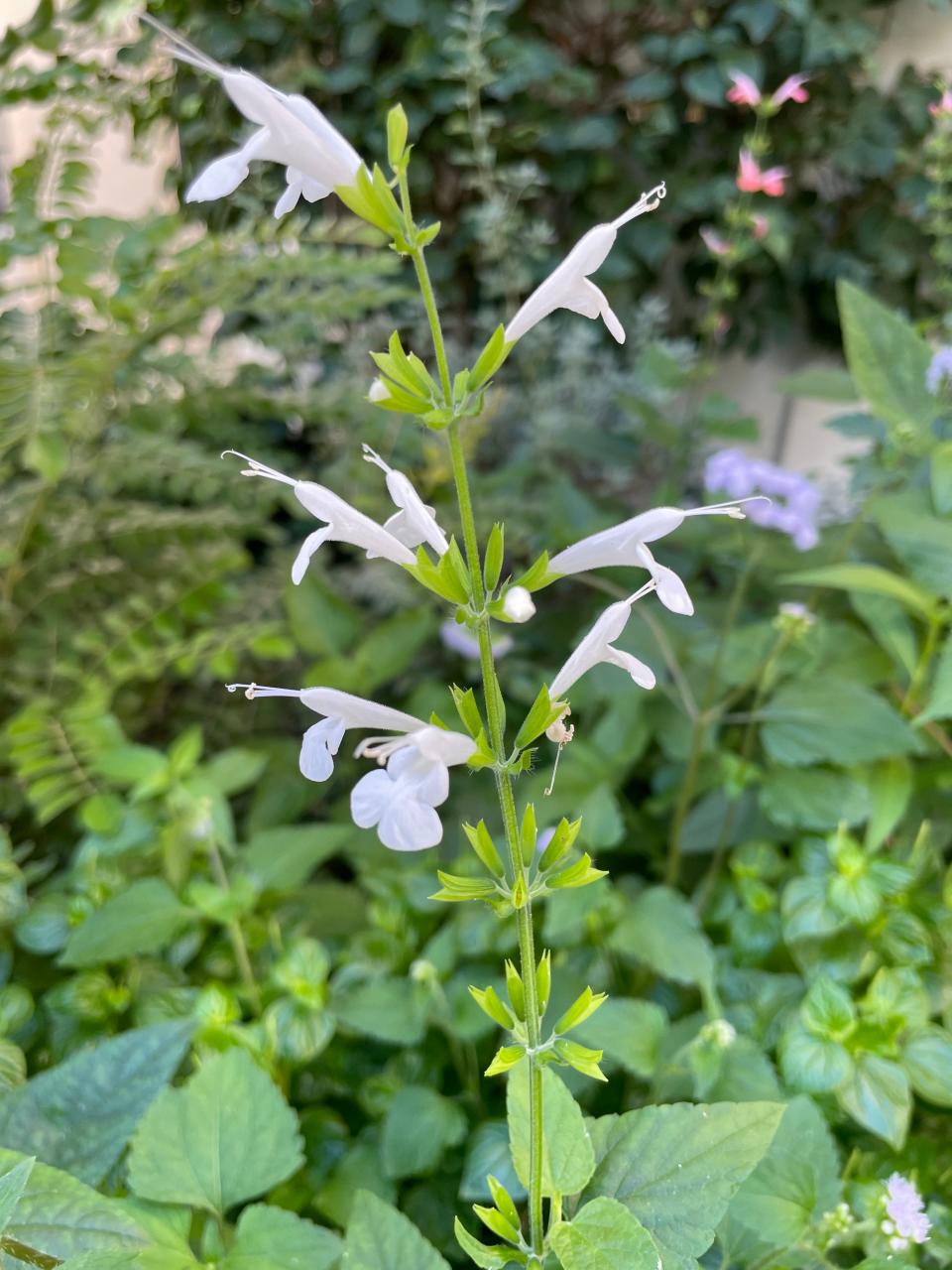
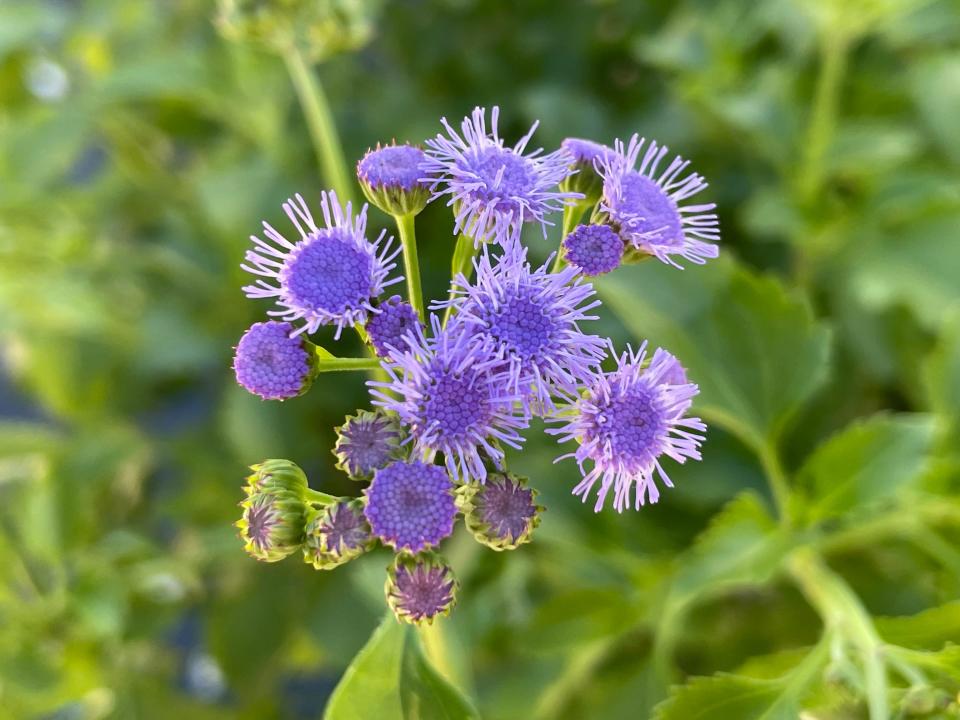
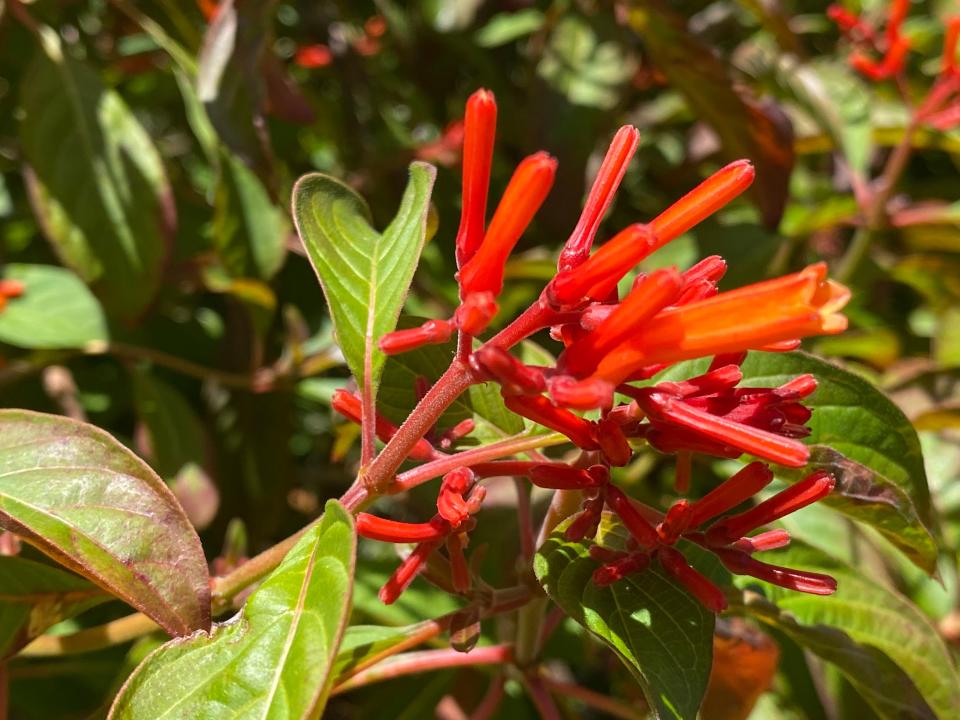
These are bordered by beautiful native beautyberry (Callicarpa americana), now laden with stunning deep purple clusters of pearl-like berries. Don’t confuse this with beautybush (Kolkwitzia amabilis), which is native to China.
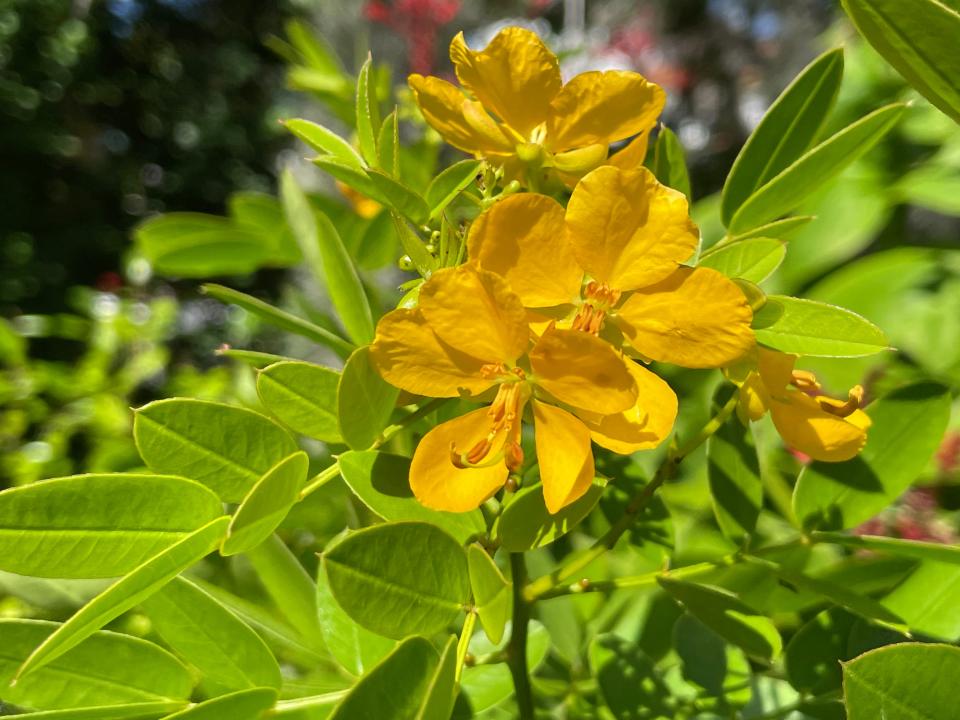
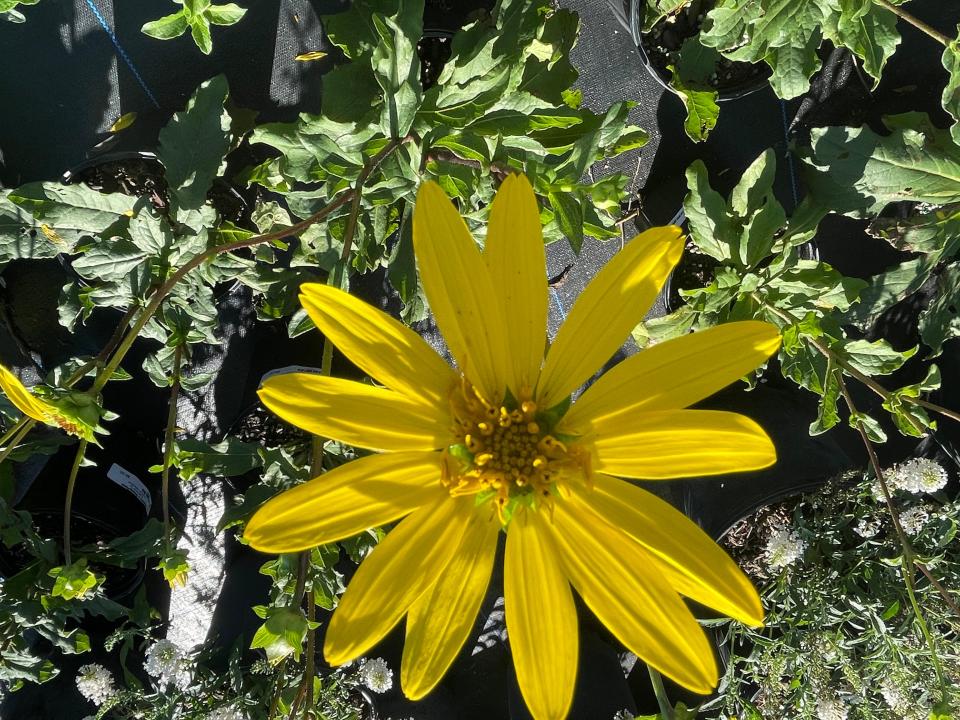
Blood sage (Salvia coccinea), planted last year, has self-seeded throughout the garden, providing lovely spots of vivid color in any formerly bare spots. Native milkweed provides great color and self -seeds as well. The north side of the garden is a dense border of bay cedar (Suriana maritima), native firebush, thryallis, Panama rose and red firespike, with a lovely rose jatropha in the back nestled among the wild coffee.
Wooly teabush (Melochia tomentosa), black torch, white indigo berry, sea oxeye daisy and Bahama senna form a backdrop to more ageratum and masses of bright yellow dune sunflower and violet beach verbena.
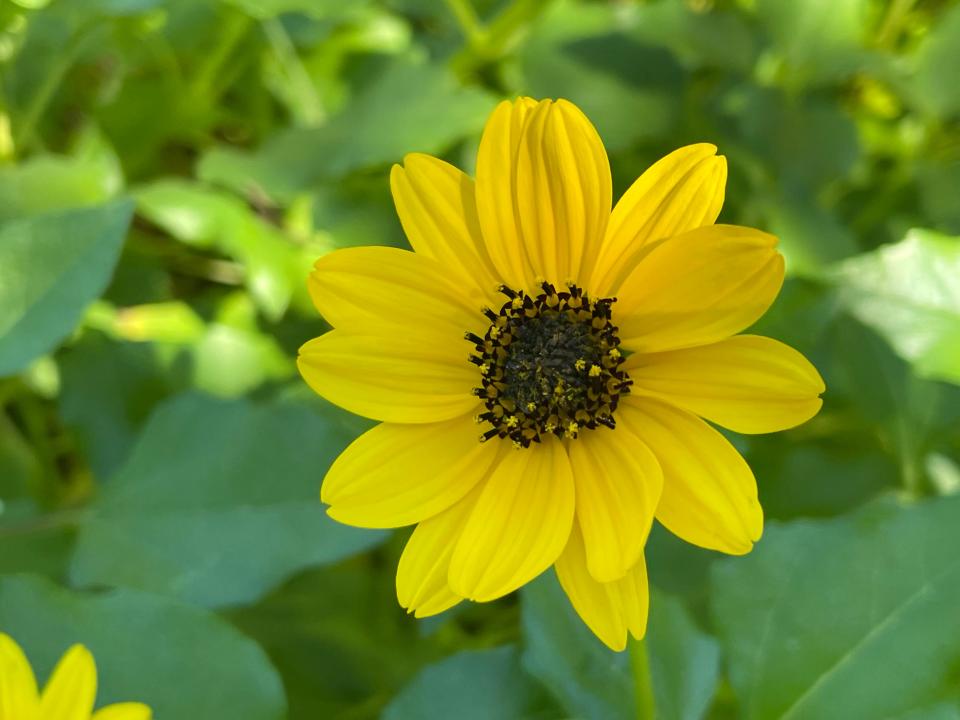
Red-tipped cocoplum adds fullness to the east border in front of the fishtail palms, with native blue porterweed, red quailberry and the lovely white spider lily (Hymenocallis latifolia) adding to the display. Jamaican caper, native lantana, wild coffee, leather fern, cinnamon bark, pearlberry, and rouge plant provide interest, color and texture along the southern border where it is quite shady.
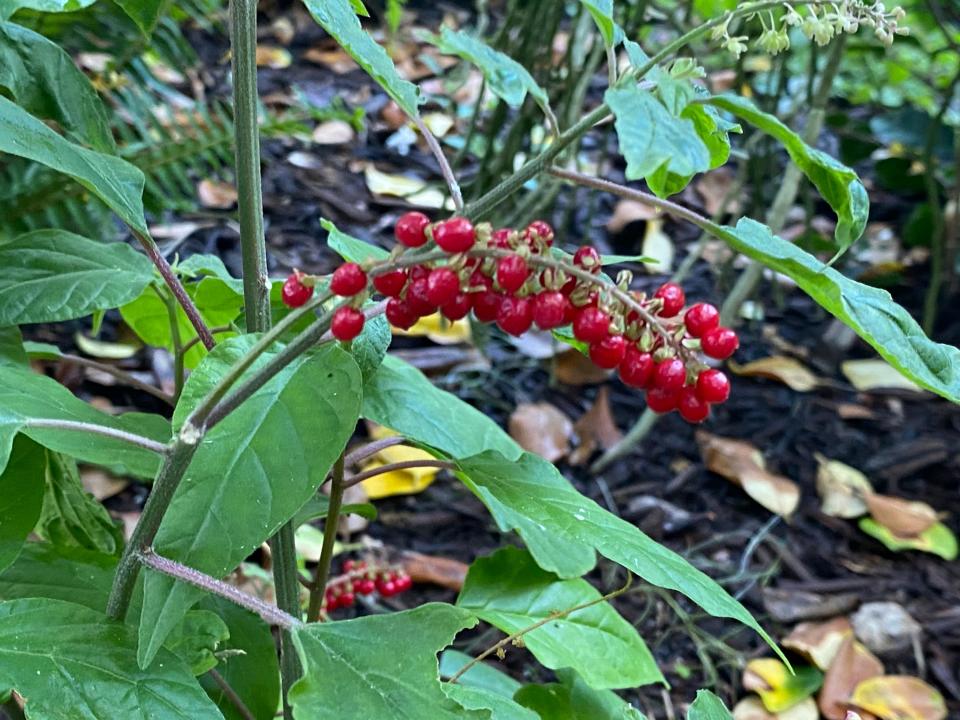
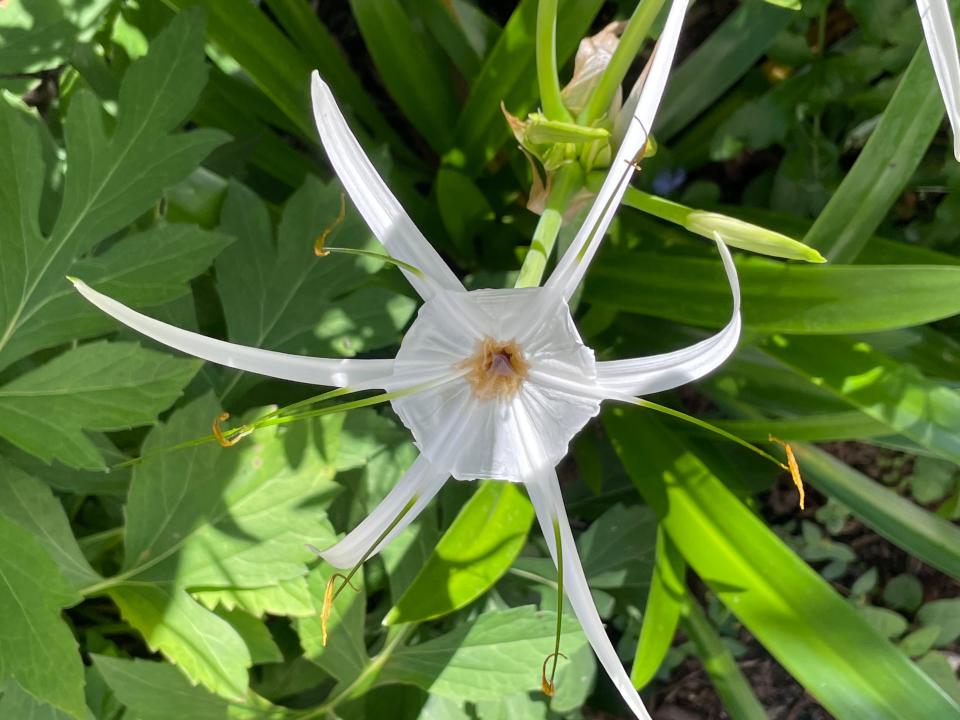
As all the plantings grew, we created paths lined with pine needles and native wood chips to make “jungle trails” behind and between the bushes and trees for the grandkids to explore. With the addition of a hammock and a swing, they can now play in this wonderful garden for hours. Ground covers of fogfruit, mimosa, swamp twinflower and river sage fill in any open spaces so there is rarely any weeding to be done. And all of these plants are tough enough to withstand the considerable exploits of the 1-to-3-year-old set.
No true garden is complete without fragrance, so sweet almond bush, night-blooming jasmine and Brunfelsia americana, also known as lady of the night, fill this requirement. Brunfelsia’s fragrance comes alive at dusk and the intense perfume of the creamy white clusters of tubular flowers literally pulls you into the garden. Sweet almond bush (Aloysia virgata) is fragrant all day and is a magnet for pollinators and butterflies, especially hairstreaks, crescents, blues and the lovely atala.
Most of us are familiar with night-blooming jasmine with its wonderful heady aroma. None of these are native, but all are Florida-friendly, and the native Simpson's stopper hedge is highly fragrant as well.
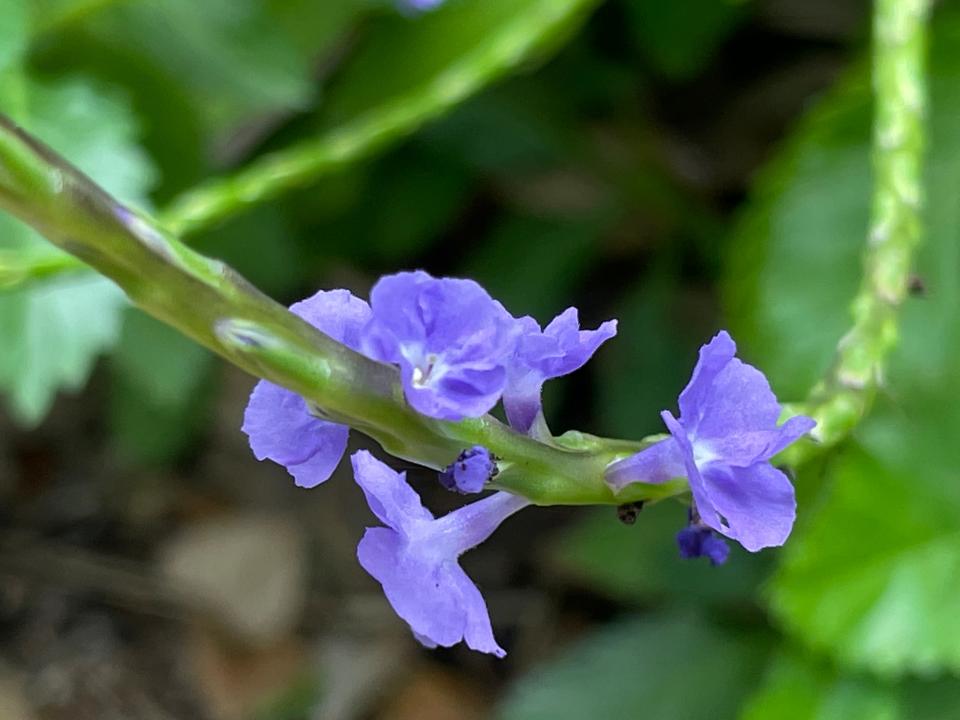
Native plants bring pollinators, butterflies, birds and wildlife to your landscape; complexity and diversity are the key components to creating a vibrant, lush, engaging environment that will provide interest and beauty.
You will never need to use toxic chemicals as these plants have grown up in this region and tolerate salt, wind and drought. And they don’t have pest problems; they host the native pollinators we so desperately need. The butterflies, songbirds, and hummingbirds they bring are just icing on the cake.
I have learned so much from watching these plants grow and adapt to different conditions. I’ll talk about that in the next article. In the meantime, try experimenting with any of these in your gardens; you’ll discover a whole new level of beauty and interest, while creating a biodiverse, sustainable habitat that is an immeasurable treasure.
Happy planting, and happy new year!
This article originally appeared on Palm Beach Daily News: Area has become a favorite place to play and relax

